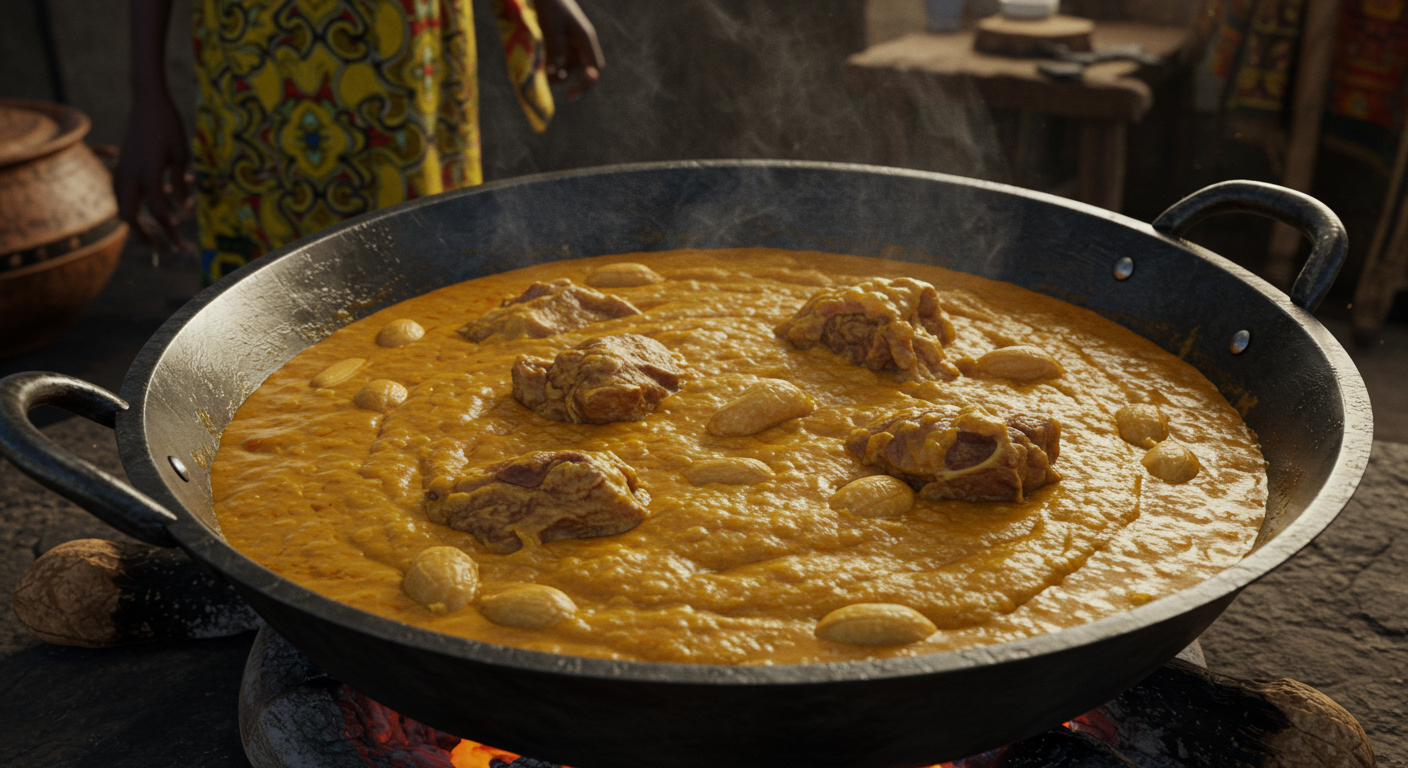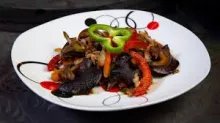Tigadèguèna—also known as mafé or peanut butter stew—is a celebrated dish from Mali that highlights the rich, earthy flavors of groundnuts (peanuts), tender meat, and a medley of vegetables. Commonly eaten across West Africa, especially in countries like Senegal, Guinea, and Burkina Faso, Tigadèguèna remains one of Mali’s most iconic and comforting meals.
Origins and Historical Background
The word “Tigadèguèna” comes from Bambara (the most widely spoken language in Mali) and translates directly to "peanut sauce." Historically, peanuts were introduced to West Africa from South America via European traders, but over time, the crop was naturalized into local cuisines. Malian cooks developed this rich stew using native ingredients and local techniques, turning it into a national staple.
Tigadèguèna is a dish that transcends class and occasion. It is just as likely to be served in a humble village compound as it is at a state banquet. In rural areas, it is often cooked in large pots over open fires and served communally with rice, millet, or tô (a starchy porridge).
Core Ingredients
The beauty of Tigadèguèna lies in its simplicity and adaptability. The standard ingredients include:
Peanut butter: The base of the stew, often homemade by roasting and grinding peanuts until they form a smooth paste.
Meat: Typically beef, lamb, or goat. Chicken or fish can also be used depending on region or preference.
Tomatoes and onions: Essential for the base sauce, adding acidity and sweetness.
Vegetables: Common additions include carrots, cabbage, sweet potatoes, okra, or eggplant.
Spices: Garlic, ginger, chili peppers, and bouillon cubes are widely used.
Oil: Usually peanut oil or palm oil.
Water or stock: To loosen the sauce and aid in the slow cooking process.
Cooking Method
Tigadèguèna is traditionally prepared by first browning the meat in oil, followed by sautéing onions, tomatoes, garlic, and spices. Once the base is well-cooked, peanut butter is added and blended thoroughly, then diluted with water to form a thick, creamy sauce. The vegetables are added to the pot and everything simmers until tender and flavorful. The final product is a velvety, nutty stew bursting with savory notes and slight sweetness.
Serving Style
Tigadèguèna is usually served hot with a starchy accompaniment. In Mali, this is often tô, millet couscous, or white rice. In urban areas or when hosting guests, rice is the preferred pairing due to its neutral flavor that allows the peanut stew to shine.
Nutritional Value
Peanuts are rich in protein, healthy fats, and vitamins like niacin and folate. The meat and vegetables provide additional nutrients, making Tigadèguèna a well-rounded, energy-dense meal ideal for large families and physical laborers.
Regional and International Influence
Variants of Tigadèguèna exist across West Africa. In Senegal, it’s known as "mafé"; in Gambia, it’s "domoda." Each country adds its own twist—some use more tomatoes, others include lemon or tamarind. The dish has also gained popularity among African diaspora communities in France, the U.S., and the U.K., where it’s often featured in pan-African or vegan adaptations.
Culinary Legacy
More than just a dish, Tigadèguèna symbolizes West African culinary ingenuity. It turns basic ingredients into something deeply satisfying. Whether you’re eating it in a Bamako household or a Parisian African bistro, it evokes warmth, community, and home.


